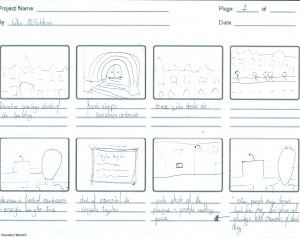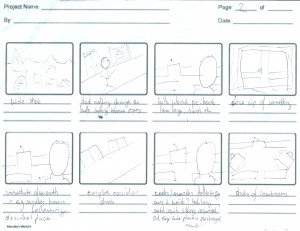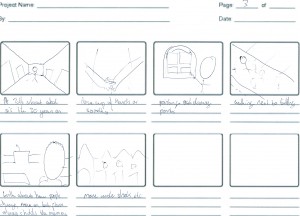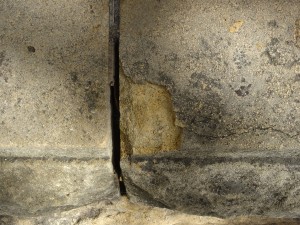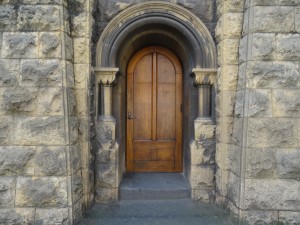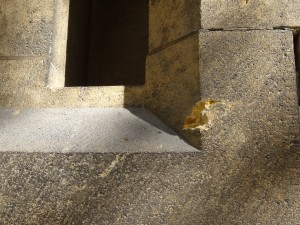Brief 3: Blog Post
Title: March 27th, 1986
Run time: Approx. 5-6 minutes
Format: Short film/interview/doco
On March 27th 1986, a car bomb exploded outside the justice complex on Russell Street in Melbourne. The blast killed one young police officer, Angela Taylor, and injured a handful of other law enforcement and justice workers. My dad, 23 at the time, was a court registrar and sitting in on court cases on that day. When the bomb exploded at 1pm, the windows of the courtroom he was in were blown out by the blast, and everyone in the room ducked for cover.
From my original ideas, I have decided I will produce a short film focusing on the effects of the Russell Street Bombing on both people (my father) and place (Building 20). I will interview my father, and his narrative of the events of that day will be used to tell the story. I will pair this narrative with shots of the building, as well as footage of my father exploring the building 30 years on from the bombings.
In order to best articulate that this is a story of place, my interview questions will be focused on the building and feelings that arise from the setting. I will further accentuate the setting by making sure it is never overlooked. For example, any interview footage will be shot in a courtroom within the building. The film will compile as many shots of the building as necessary.
As I discusses in this blog post, Building 20 is mostly silent. I believe this will work to my advantage, as I’d prefer that the building seems empty, almost eery, to convey the right mood in my film.
In my film I will include shots of the damage that still remains from the Russel Street Bombing. I will use these shots to show that such major events become a part of a place, even if this is unintentional. I have compiled a rough storyboard as an outline of how my film will progress.
I have chosen to focus on the Russell Street Bombing as it is a topic close to me. In a somewhat selfish way, I have chosen this topic as a way of finding out more about something that happened in my Dad’s life before I was born. I am sure that most people find their parents’ lives before children to be interesting. To be completely honest, a small part of my decision to choose this idea stems from my easy access to a great interviewee. Furthermore, I’m interested in how something that happened 30 years ago can still affect both people and place today.
In Losing Site (2011), Shelley Hornstein discusses place and remembrance (which I have discussed here), stating:
‘Our task of remembrance is a continuing project, always linked to others and to places that are never separate or distinct (p19)’
In my film I will try to highlight this join between remembrance and place. Can a place ever be separated from its past? Is it only through people that a place serves as one of remembrance? How important is the past to a place’s current and future use?
Through my directed interview questions, I hope to be able to bring the focus back to place as much as possible:
- What happened that day?
– Hopefully will get a detailed and long answer to this one. Will be used at the beginning of the film - This attack was particularly place orientated. In what did this place (the justice complex) mean different things to different people?
- How did your reaction to the place change after the attacks? Both in the immediate time following the attacks, and then years later?
- When you visit this place does it provoke specific memories?
- Can you recognise any remnants of the attack still in the building?
- How long/when did you work here?
- Talk about what it was like before the bomb
- How long did it take until the court began sitting again? Did sittings take place in unfinished/partially-destroyed courtrooms?
In the past week, I have visited Building 20 in order to collect some reference photos and videos to use for my film (note for Rachel: the videos failed to upload but they are in the powerpoint I have uploaded to google drive).
I have included here a timetable of work that I have already undertaken on this project (those checkpoints that have been bolded) and what I still have to do.
| Weeks 2-59th March – 10th April | – Begin thinking about project ideas – Visit project site – Research site history |
| Week 6 13th – 17th April |
– Begin working on single project idea – Visit site again – Find out what equipment will be needed – Build up idea, write down ideas as they come to mind, keep notes |
| Week 7 20th – 24th April |
– Collate work on project to date – Work on practical aspects of planning (e.g. storyboarding, writing interview questions, pre-interviewing dad) – Figure out access with Rachel/rest of the class – Present pitch at mid-semester crits |
| Week 8 27th April – 1st May |
– Begin work on film – Start collecting shots of the site (e.g. long-shots of the building, close ups of damage) – Find out as much as possible about the Russell Street Bombings |
| Week 94th – 8th May | – Keep collecting shots of the building – Film an interview with Dad inside the building – Edit together a rough cut – Find music, old photos, etc. for use in film |
| Week 1011th – 15th May | – Collect any missing shots for the piece – Re-interview |
| Week 1118th – 22nd May | – Editing begins – Re-shoot anything that needs to be re-done |
| Week 1225th – 29th May | – Editing continues – Write blog post/reflection on project |
| Week 131st – 5th June | – Complete project – Submit for marking |
It is important that before I begin working on this project that I look into the following issues:
- Camera equipment: which camera should I use, how long can I hire it for, etc.
- Time-lapse video: is there a specific way of doing this other than setting up a tripod and waiting?
- Access: do we have access to building 20 after business hours?
References:
Hornstein, Shelley. (2011). Making Site: Walter Benjamin was Here. In: Losing Site: Architecture, Memory and Place. England, USA: Ashgate Publishing. p17-22.
